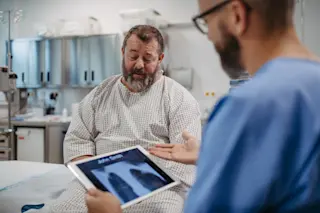On August 26, 1999, Sarah Hovis, a senior at the University of Virginia business school, was raped at gunpoint in her off-campus home. "I was blindfolded the whole time, and I never would have been able to pick him out of a lineup," Hovis says. Traces of the intruder's DNA turned up on the bedsheets and in the saliva he left on a beer can, but the sample didn't match the genetic material of any of the suspects. The next step was to check for leads in the state's DNA database. But Virginia had only recently begun developing DNA profiles from roughly 160,000 biological samples collected from convicted offenders. At first, no match emerged.
Then, on October 5, 1999, a call came from the Virginia lab: "We've got your rapist." Captain J. E. "Chip" Harding savors the memory. "It was probably the most exciting moment in my whole period of ...














